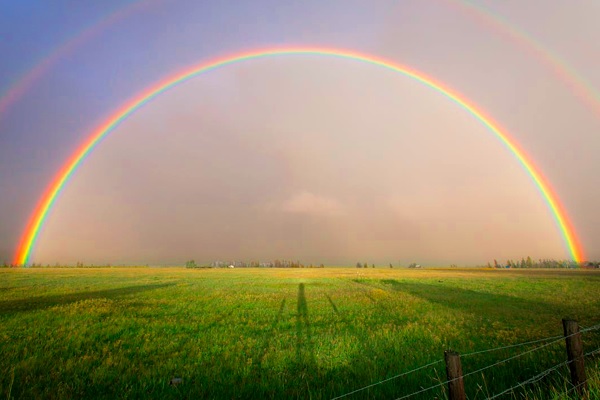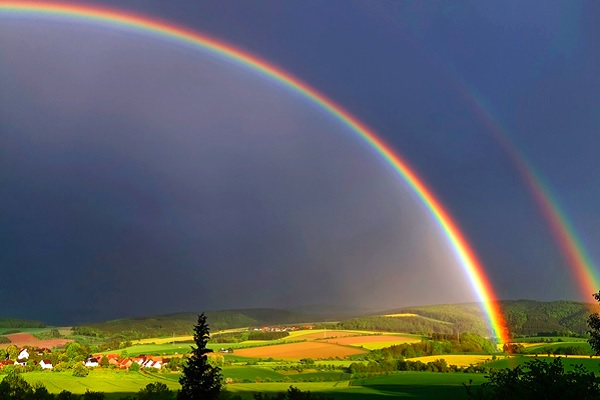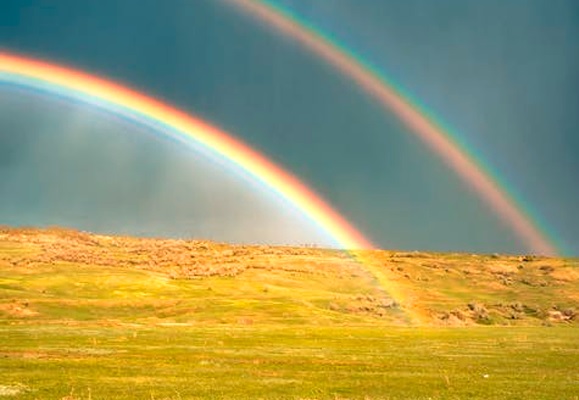Share on:
What is a Rainbow?
A rainbow is an optical illusion, it does not actually exist in a specific spot in the sky. It can be seen under certain meteorological conditions. It is caused by reflection, refraction and dispersion of light in water droplets resulting in an effect similar to a spectrum of light appearing in the sky.
How are rainbows formed?
When a ray of light passes through a surface that divides two spaces of different densities (the air in the atmosphere and the raindrops), the light is refracted because light travels slower in water than in air, this occurs because the density of water is higher.
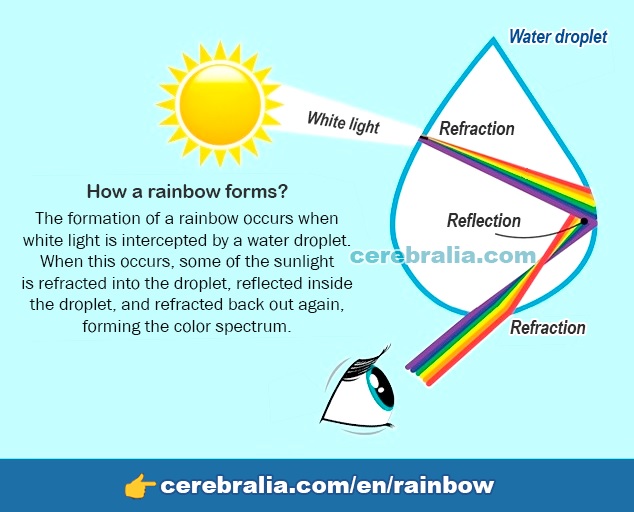
Sunlight penetrates the atmosphere. And if it encounters suspended water droplets on the way, these generate a deflection of the light beam causing it to refract and separate the seven colors of the visible spectrum (red, orange, yellow, green, blue, indigo and violet). These colored rays reflect (bounce) off one of the faces inside the droplet and are refracted again as they exit.
Why do we see large bands of color?
The answer lies in the angle at which the colored rays come out of each drop. Each of these colors is deflected by the reflection at a different angle according to its frequency. This means that only one of the rays coming out of each drop reaches our eyes and we see only one color in it. It takes the form of a multicoloured circular arc, where the multiple reflections of millions of water drops are grouped, with the colors perfectly ordered.
Most of the light is projected towards us in an angular range of 40° for violet light and 42° for red light, which means that a rainbow always appears in a range between 40° and 42°. Droplets that are less than 40° will appear white (like sunlight). And we will not see light from droplets at angles greater than 42°.
Perfect position for viewing a rainbow
Since rainbows usually form after rain, we can only see them when we are standing in the right place and facing the right direction. To see a rainbow, there must be water droplets suspended in the atmosphere.
Rainbows caused by sunlight always appear in the section of sky directly opposite the Sun. So, you must be standing with the sun at your back and above you, and the rainbow will appear in front of you. The lower the sun is, the higher the rainbow will appear.
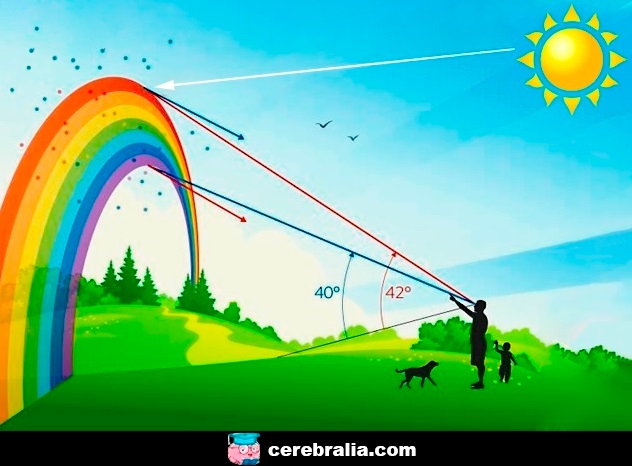
Because the tilt angle of 42 degrees is measured from the eye of each observer, no two people see exactly the same rainbow, since they are seeing the light reflected from different drops of water, from a different horizon.
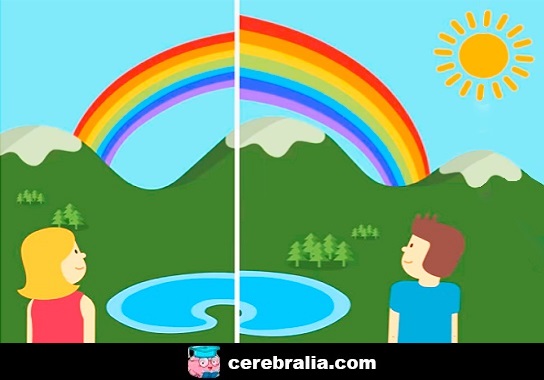
In fact, no one sees the same rainbow. Each person has a different antisolar point, each person has a different horizon. Someone who appears below or near the end of a rainbow to one viewer will see another rainbow, extending from his or her own horizon.
What is a double rainbow?
Double rainbows are formed when sunlight is reflected twice within a raindrop with the violet light that reaches the observer's eye coming from the higher raindrops and the red light from lower raindrops.
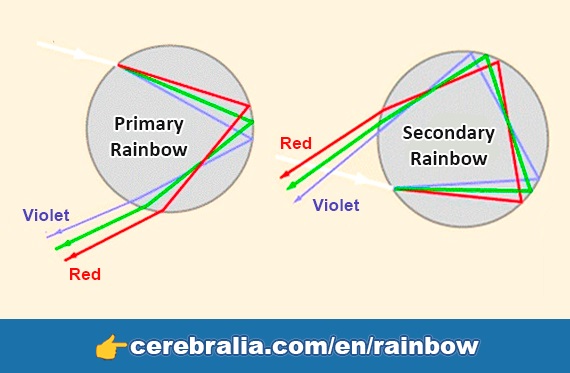
This means the sequence of colours is inverted compared to the primary rainbow, with the secondary bow appearing about 10 degrees above the primary bow. The secondary rainbow is also dispersed over a wider area of the sky.
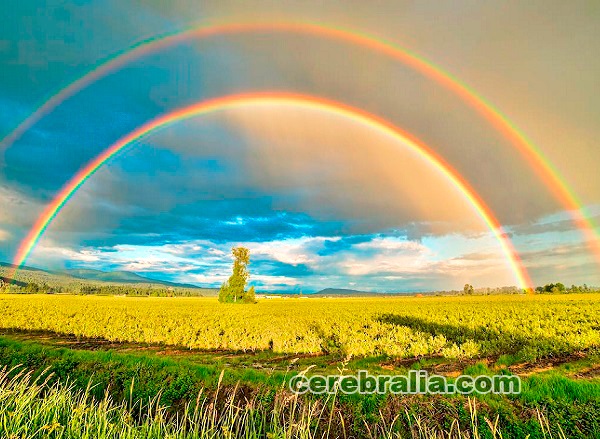
Surprisingly, this phenomenon is actually relatively common, especially at times when the sun is low in the sky such as in the early morning or late afternoon. You will also notice that its intensity is lower than that of the primary rainbow, since the rays lose energy in the rebounds.
If rainbows are circular, why do we only see arches?
Rainbows are actually full circles, however, the horizon prevents us from seeing the entire sphere, so we only see half of it (in the form of an arc). Only from a very high altitude, for example in an airplane, it is possible to see its complete shape. Pilots report seeing true full-circle rainbows. It would be difficult to see it through passenger windows, but pilots have a much better view from the front.
🥇 Find out more:
✅ Why do we see objects in color?
✅ Why is snow white when ice is transparent?


